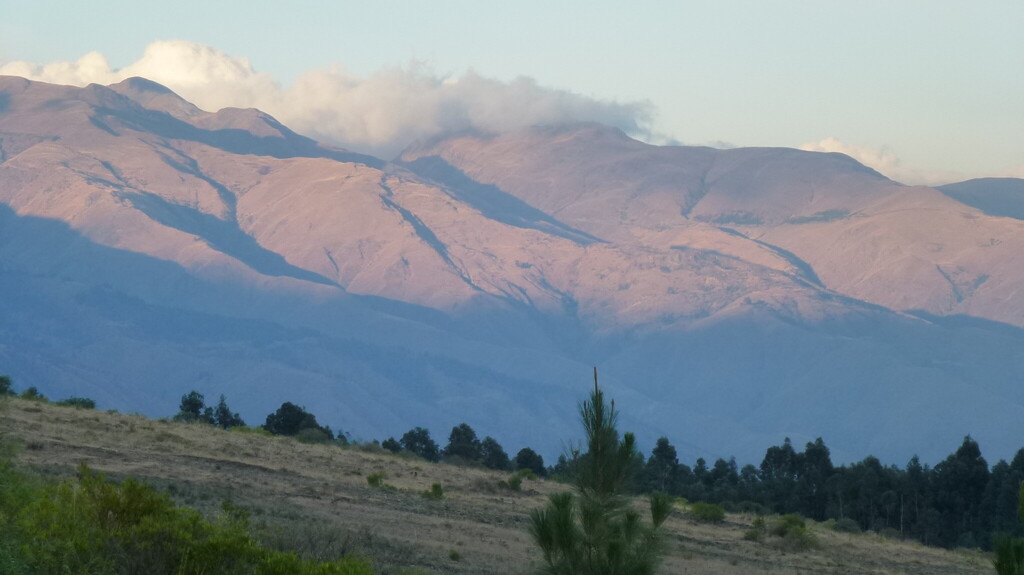Visit to Sacaba at 3,000 m altitude
On Friday and Saturday, 14 and 15 August, I visited the municipality of Sacaba, where we have established a total of 13 agroforestry plots in three villages. Together with Sonia, the head of CETM, one of our local partners, and Abdong, a technician, we first drive to Chaupi Melga and visit Don Julio. As soon as he hears our car, he comes out of his house and greets us warmly. Then we go together to his plot. We are at about 3,000 m altitude.
The plants in the plot are protected from roaming cows, sheep and goats by a shiny silver fence. Our carefully planted and tended trees would otherwise quickly disappear into their mouths. The plot looks good. They are still small tree seedlings, but local tree species stand next to apple trees, and maize, peas, cabbage, pumpkin and lettuce grow around them. Cut flowers for the local market are also on display.
Letting people have their say
I want to let people have their say and have come up with questions like, "What has been your experience with dynamic agroforestry?" or "Do you have any advice for someone who wants to start with dynamic agroforestry?" or even "What would you do differently next time?" For this I brought my camera, which produces quite passable little videos. We set up, the scenery is breathtaking. In the background is the snow-capped summit of Tunari, a 5,000-metre peak.
Don Julio begins to talk about his initial scepticism, which turned into curiosity and finally into enthusiasm. When I ask him if he is still missing something, he answers: "Trees! - He has too few of them and points around him. "You see, there is still a lot of space here." I don't show how much this statement touches me, because it tells of a change of 180 degrees.
Local tree varieties become interesting
Before, trees were only good for logging and the slopes of the Andes are correspondingly bare. We tried to convey that apple trees, for example, need a few years before they bear fruit, but that they can then produce a rich harvest and thus also provide security for old age. We have also repeatedly pointed out the local tree species that store water in the soil, keep the soil crumb, provide fodder for livestock and some even bring nitrogen and thus plant fertiliser into the soil. It seems to have caught on. The project only lasted six months.
That day and the next, I do nine more interviews and hear many similar answers. Señora Claixta, when asked what she still lacks, says: "Knowledge, I want to know more about the method." With this answer, I return to the research farm Mollesnejta, where I live during my stay in Bolivia. We are preparing the second phase of the project. This answer makes us rotate, we discuss all night long. People want knowledge. So far, there are very few experts with experience in dynamic agroforestry. But why should we only train technicians to pass on the knowledge, why not the farmers directly, who can then show it to their neighbours. How can we best do this?
I can perhaps tell you more about this at the next blog.

